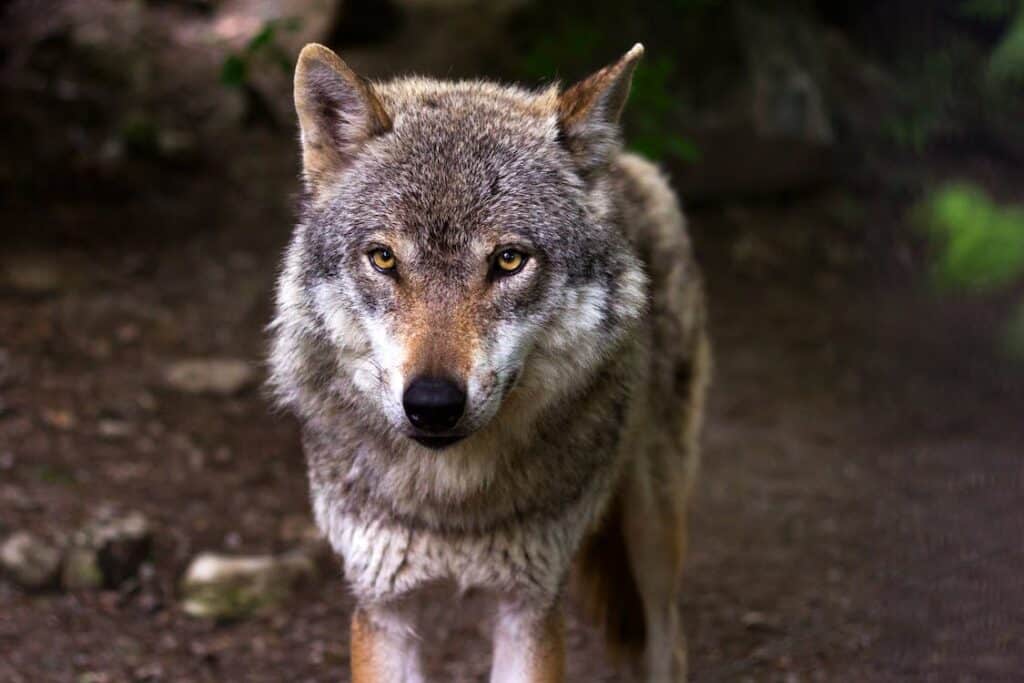The differences between dogs and wolves can be flagrant, especially compared to the chihuahua. On the other hand, some dogs have a lot of similarities with the wolf, especially Nordic and hybrid dogs.
Not only are they different physically, but they are even more so mentally. That is to say that the needs of the dog, his development, and his learning from those of the wolf.
Dogs and wolves have been estranged for thousands of years and have evolved since we tamed them over 135,000 years ago. Indeed, domestication has had a great impact on the dog’s physiology.
Are Dogs and Wolves the Same Species?
The Latin name of the wolf is Canis Lupus and that of the dog is Canis Lupus Familiaris, which means that it is a subspecies of the wolf.
Yes, they are the same zoological species and they belong to the Canidae family.
In this family, we also find coyotes, foxes, and jackals. Among them, the wolf is the most social and this is one of the reasons why we strongly believe that dogs are their descendants. They also have very similar behavior patterns. That is to say that the majority of wolves do not live in groups.
What Are the Physical Differences Between a Dog and a Wolf?
There are several subspecies of wolves, just as there are several breeds of dogs. They may look alike, but they still have physical differences.
The physical differences between dog and wolf are in the diversity of sizes and colors, the shape of the ears, the length of the legs, tail, and muzzle, and the density of the coat.
The size of a dog can be similar to that of a wolf, but it can also be larger or smaller. The size of a dog varies mainly according to its breed and it is the same for the wolf. For example, the Mastiff is bigger and stronger than a wolf, but the same could not be said for Yorkshires.
If compared to the Labrador, the wolf has a much denser coat. On the other hand, wolves that live in warmer regions will have a less dense coat. In addition, wolves can have a coat of several colors. However, dogs have more varied colors and distinct patterns depending on the breed.
The resemblance of the ears depends on the breed of the dog. They can be straight, but they can be drooping, like the Beagle. However, wolves and some Nordic dogs have shorter ears to avoid frostbite.
The muzzle of the wolf is more elongated than that of the dog. Their legs as well as its tail are generally longer than dogs. Some dogs have more powerful jaws than the wolf, but on average dogs have weaker jaws.
What Are the Developmental Differences Between Dogs and Wolves?
The socialization period is a learning phase in the development of social relationships. During this period, pups learn the communication signs of their species, walk, recognize their species, and integrate into the group.
The developmental differences between dogs and wolves are related to the socialization period which is extended in puppies. This has an impact on their attachment and on their social adaptation.
For the puppy, it begins between the 5th and 6th week of life and ends around the age of 16 weeks. For the pup, it only lasts a month and it starts so early that he’s still blind when it ends.
Overall, pups tend to be more curious about their surroundings 2 weeks earlier than a puppy. When this period ends, they become more fearful and suspicious of the unknown. Despite everything, he is able to be faster in problem-solving tasks than the dog. This is due to his distrust which allows him to take a step back and analyze a situation, in order to avoid putting himself in danger.
As for the dog, he adapts more easily, but he is more dependent on humans. He is also less persistent when it comes to solving a problem, as he turns to humans for help. However, dogs are better at responding to human-guided tasks. Thus, thanks to their extended socialization period, they can form a stronger bond with those around them, including humans.
What Are the Dietary Differences Between Dogs and Wolves?
As you may know, the wolf is a predator, therefore it is a carnivore. He still consumes small amounts of fruits, such as grapes, which can cause kidney failure in dogs. On the other hand, since domestication, their diet has changed and so has their physiology.
Dietary differences between dogs and wolves changed when dogs started feeding on leftovers that humans left around the village. Dogs are now classified as omnivores, like pigs, rats, and humans.
Under these conditions, they began to eat various carbohydrate-containing foods. This allowed them to digest the starch, which the wolf does not assimilate well. However, domestication did not affect the number of essential nutrients such as niacin, taurine, and arginine.
What Are the Effects of Dog Domestication?
Domestication has influenced communication, physiology, diet, development, genes, and longevity.
The effects of domestication have leg dogs live longer, bark to communicate, and become more carriers of genetic diseases.
Indeed, domestication has had a positive and negative impact on dogs. For one thing, dogs and wolves in captivity live longer than wild wolves. This means that the domestication of the dog has extended its life expectancy.
Their vocalizations have also changed. Barking is used to warn, and express fear or excitement. Unlike wolves, which bark very little and express themselves more through howls or growls.
On the other hand, domestic dogs carry more genetic diseases than wolves. This is due to the fact that natural selection no longer occurs, instead, it has turned into artificial selection. Since Victorian times, this artificial selection has been done by breeding dogs that best match the breed’s standards. Doing this promotes inbreeding and maintains deleterious genetic mutations in the dog’s DNA.
Bibliographic sources:






